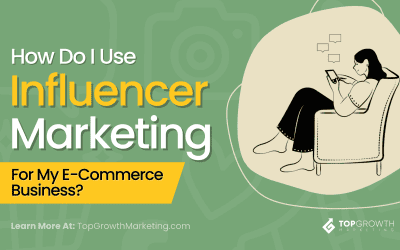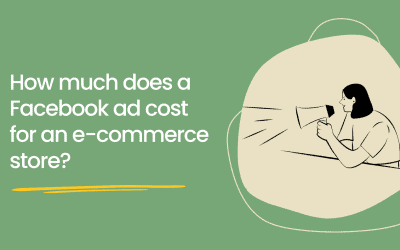Business growth is essential for any company that wants to stay competitive and thrive in today’s economy. If you’re looking to expand your business, but aren’t sure where to start, don’t worry! We’ve got you covered.
In this guide, we will discuss a few main business growth strategies that you can always use to inform your business decisions. These are growth marketing fundamentals we start from in all our work with clients.
But, a growth strategy is only as good as its application. So, we’re also giving you a bunch of ways in which you can apply these business growth strategies so you can jump-start your growth today.
The Four Types of Business Growth Strategies: By The Book
If you’ve ever discussed business in an academic setting, you’ve heard about most of these strategies. But a passing understanding will only get you so far.
When it’s time to apply a business growth strategy that involves mobilizing your entire company, you should be confident in how to execute it.
So, let’s get through a few of the most important business growth strategies and how you might apply them to your business.
Market Penetration: Increase Your Market Share
The most common strategy of business growth is market penetration.
In short, market penetration is an acquisition strategy that aims to increase your brand’s share of an existing market with an existing product.
Most of our work with clients involves this business growth strategy and it’s the one we’re most confident applying.
Some of the typical ways to approach the market penetration strategy is edging out competitors through pricing, bundling, or other creative ways to offer better value to customers.
Common growth strategies that we use to increase market penetration involve a process of implementing giveaways, loyalty programs, and email/SMS marketing to create a customer ecosystem. That ecosystem hinges on an initial marketing investment that then continues to grow with minimal upkeep.
We’ve found this way to achieve market penetration greatly reduces marketing costs and improves return on investment. However, we’ve also seen this backfire spectacularly. So, if you’re thinking about applying it, make sure you create a solid plan and understand your ROAS and customer lifetime value.
Market Segmentation: How To Improve Marketing Performance With Targeting
Market segmentation is a key aspect of just about every business growth strategy, but especially important for penetration.
By segmenting your audience, you can find new buyers in markets where your brand is already present.
It’s a strategy we apply consistently across our client portfolio and one that always yields positive results.
This is especially effective if your current market is saturated or if there are already too many competitors vying for attention.
But, you can also use market segmentation to target new markets that are similar to your current ones.
For example, if you’re a women’s clothing company, you may want to consider targeting plus-size women or petite women with a targeted offering.
Market Development: Expanding Your Brand’s Market Share
Another common strategy entails developing a new market for an existing product. For most brands, this approach is more challenging than market penetration and the expense is substantially more front-loaded.
When we work with a business that wants to enter a new market, our approach is to always ask: why?
Often, we find that business owners want to break into a new market when they haven’t completely exhausted their options in the markets where they already have traction.
You ought to consider market development only after you’re certain that your brand’s potential is exhausted in its current markets.
So, it’s always worth the effort to do market research and see if you can achieve growth without investing in new markets. And that’s because market penetration is frequently the most expensive business growth strategy.
You can successfully break into existing markets in a lot of ways. Usually, it means finding a market that exists but is underserved by the current competitors.
Alternatively, you may offer new customers free trials at a reduced cost. You can get a discount on larger orders and you can lower prices if your competitor offers similar offers.
Having lowered prices may seem unattractive initially, but this is a good short-term expansion strategy if you’re selling products or services that are difficult to differentiate from what’s already available in the target market.
Product Development: Create New Products Or Services
If you want to grow your business, you need to have a constant stream of new products and services. Product development should be an ongoing process in any organization that wants to stay ahead of the competition.
Working with a strategic planning consultant can help ensure your product development stays aligned with your business goals and growth opportunities.
There are a few ways to go about developing new products and services. The most common way is by listening to your customers and understanding their needs.
Often, something as simple as a poll of your customers can give you a lot of information about what current and potential customers might want to see from you. Likewise, you can take a more structured approach with a paid survey for existing customers.
These are tools we often use and it helps brands understand in which direction to take their product offering.
A great example of how product development can be an explosive development strategy comes from one of our clients that specializes in a category of industrial goods.
Market research showed us that the same product could be a profitable direct-to-consumer offering with minor repackaging. This ultimately yielded fantastic results for the client and they were able to grow their business substantially in an as-yet untapped market.
Product development is a great way to place your product in existing markets that were previously unavailable to you but you knew existed.
This sort of market expansion strategy isn’t going to work for every business but has the potential to pay off big if implemented correctly.
Market Diversification as a Growth Strategy
Lastly, you may consider market diversification to grow your business.
This type of business growth strategy entails expanding the types of products and services you offer to include new offerings that complement your existing ones.
It stands in contrast to the market development strategy in that you need, both, new markets and new products to diversify your brand.
Diversification is a growth strategy that we usually like to reserve for larger brands that have a solid foothold in their market and the means to expand their portfolio.
It’s a strategy we used to successfully improve AppSumo’s return on ad spend and help them launch a new product.
The key to market diversification is not to stray too far from what you’re known for. For example, if you’re a clothing company, adding a line of cosmetics makes sense but venturing into selling cars would not.
A lot of times, businesses want to diversify their product offerings because they see other companies doing it and they think it will help them grow. But this isn’t always the best approach.
Some businesses even try diversification as a growth strategy to survive rather than expand. In our experience, this almost never works out and a better approach is to go back to the drawing board and focus on your fundamentals until you’re in a more stable position before you consider diversifying.
The Best Business Growth Strategy Is The One You’re Not Using
The four business growth strategies we’ve looked at are each essential in their own way for businesses looking to expand.
However, it’s important to note that these strategies only contextualize growth in a broad way. The tactics that accompany each strategy are ultimately the most crucial element of your business development.
Unfortunately, there are simply too many tactics to list and they all depend on what stage your business is in and what your goals are. So, when you’re making your next business decisions, try to think of it in terms of the growth strategy you’re trying to accomplish.






Great ideas! I do agree with your points. We must not stop and keep our business engaged. And creating new products and services will really be helpful and it will definitely create a positive long term effect.
I like the way you articulate this topic. I was hooked on Market Development. This strategy may be costly that is why you should exaggerate more on market research. Great job!